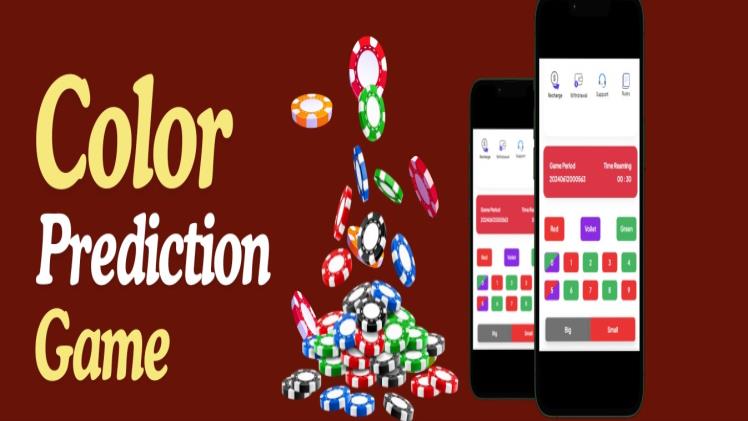How Predictive Algorithms Learn from You: Adaptive Difficulty in Color Games

Color prediction games have become a staple of mobile entertainment, offering players a fast-paced, visually engaging experience with the allure of real-time rewards. While these games may appear simple on the surface—choose a color, place a bet, and wait for the result—the underlying systems are increasingly complex. At the heart of this evolution lies the integration of predictive algorithms and adaptive difficulty, which are transforming how these games respond to individual players. These technologies are not just enhancing gameplay; they are learning from users in real time, tailoring experiences to maximize engagement, challenge, and retention.
The concept of adaptive difficulty is not new. It has long been used in traditional video games to keep players in a state of flow—challenged but not overwhelmed. What’s new is the application of predictive algorithms that analyze player behavior and adjust game parameters dynamically. In color prediction games, this means the system can learn how a player bets, how often they win or lose, and how they react to different outcomes. This data is then used to subtly alter the game’s difficulty or presentation, creating a personalized experience that evolves over time.
At the core of this system is data collection. Every tap, pause, and wager is logged and analyzed. The algorithms track metrics such as bet size, frequency of play, streak patterns, and even the time of day a player is most active. Over time, this data forms a behavioral profile that helps the system predict future actions. For example, if a player tends to increase their bet after a loss, the algorithm might adjust the game’s pacing or visual cues to encourage that behavior. If a player shows signs of fatigue or disengagement, the system might introduce a bonus round or a limited-time offer to re-engage them.
Machine learning plays a crucial role in this process. Unlike static difficulty settings, machine learning models can adapt in real time. These models are trained on vast datasets of player behavior, allowing them to recognize patterns and make predictions with increasing accuracy. As the player continues to interact with the game, the model refines its understanding, becoming more adept at anticipating their decisions. This creates a feedback loop where the game becomes more attuned to the player’s habits, preferences, and emotional responses.
One of the most intriguing aspects of adaptive difficulty in color games is how it balances challenge and reward. If a game is too easy, players may become bored and disengage. If it’s too hard, they may feel frustrated and quit. Predictive algorithms aim to find the sweet spot, adjusting the odds, timing, and visual stimuli to keep players in a state of optimal engagement. This might involve increasing the frequency of small wins to build confidence or introducing occasional losses to maintain tension and excitement.
The personalization doesn’t stop at difficulty. Some platforms like in999 use predictive algorithms to tailor the entire user interface. Colors, animations, and sound effects can be adjusted based on what the system believes will resonate most with the player. For instance, a player who responds positively to fast-paced visuals might see more dynamic animations, while a more methodical player might experience a calmer, more deliberate interface. These subtle changes enhance the sense of immersion and make the game feel uniquely tailored to each user.
However, the use of predictive algorithms and adaptive difficulty also raises important ethical questions. When a game learns from a player’s behavior, it gains the ability to influence that behavior. This can be used to enhance enjoyment and satisfaction, but it can also be used to encourage compulsive play or increased spending. The line between personalization and manipulation can become blurry, especially in games that involve real-money transactions. Developers must navigate this terrain carefully, ensuring that their algorithms are designed with user well-being in mind.
Transparency is key. Players should be informed about how their data is being used and given the option to opt out of certain types of personalization. Platforms can also implement safeguards such as time limits, spending caps, and reminders to take breaks. These features not only promote responsible gaming but also build trust between the platform and its users.
Looking ahead, the role of predictive algorithms in color prediction games is likely to expand. As artificial intelligence becomes more sophisticated, games will become even more responsive and personalized. We may see the emergence of adaptive narratives, where the game’s storyline evolves based on player choices, or predictive coaching systems that offer real-time strategy tips based on performance. These innovations will blur the line between game and player, creating experiences that are not just interactive but truly collaborative.
Conclusion
In conclusion, predictive algorithms and adaptive difficulty are reshaping the landscape of color prediction games. By learning from players and responding in real time, these systems create a dynamic, personalized experience that keeps users engaged and entertained. While the technology holds immense potential, it also demands thoughtful implementation to ensure that it enhances rather than exploits the player experience. As the digital gaming world continues to evolve, the fusion of data science and design will play a central role in defining the future of interactive entertainment.






